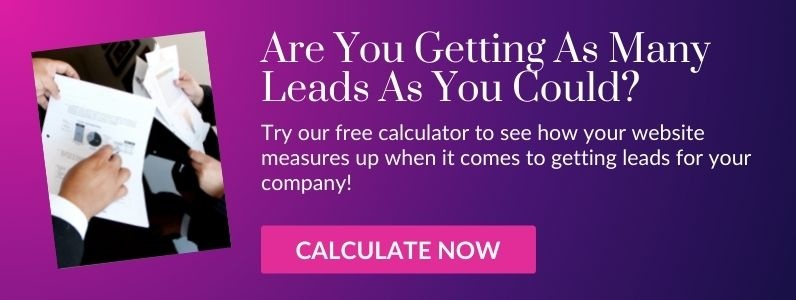When you need to make a big or small purchase, you generally move through multiple stages known as the buyer journey before making a final decision on the product or service you seek. You first find a problem that needs a resolution.
Often, you look through reviews and check out multiple options from different vendors for this solution. You may seek advice from family and friends if it’s a huge purchase, like a car or a house.
Check Out The Ultimate Guide to B2B Lead Generation
Once you’ve decided which product to buy, you move through either the online buying platform or you purchase in-store from the cashier.
Now consider how a buyer for your company’s products goes through the same buyer journey. Multiple parts of this process can go wrong for the buyer, leading them to choose a competitor over your particular product.
In this guide, we outline exactly how you can ensure that the buyer journey goes well for your business. We provide tips and advice that will ensure your content marketing strategy aligns with the buyer’s journey. Keep reading to find out more!
Recommended: Do B2B Buyers Really Fill Out Web Forms to Download Content?
Summary
Content Roadmap
- Creating Content For The Awareness Stage
- Creating Content For The Consideration Stage
- Creating Content For The Decision Stage
- Mapping Out Stages Of The Buyer Journey
- Summary
Top Of The Funnel: Creating Content For The Awareness Stage
The buying process starts with the awareness stage. To ensure your inbound campaign is effective, you’ll need to provide content that is targeted to your average buyer persona at the awareness stage of the buying process, as well as the next two stages of consideration and decision-making.
The awareness stage involves understanding that there is a problem that needs a solution. This is when the buyer encounters the pain points of a specific problem in their day-to-day life. It’s vital to know exactly what type of content to provide for stages of the buyer journey.
During this stage, potential customers are seeking more educational content and neutral material from a vendor. For the awareness stage, we advise providing the following types of content:
- White papers
- Electronic guides
- Editorial content
- E-books
- Analysis reports
Middle Of The Funnel: Creating Content For The Consideration Stage
Within the sales funnel, the consideration stage involves the typical buyer looking at all of the options available to him or her. The buyer considers how well each option solves their problem. What makes the products different from each other? What feature stands out from the rest?
How does this product from vendor A compare with a similar product from vendor B? What are the pros and cons of each product? These are all the questions that a consumer will answer during the consideration stage of the buyer's journey stages.
When creating content for the consideration stage, we suggest the following materials
- Webcasts
- Videos
- Expert and editorial electronic guides
- Podcasts
- Solution comparison white papers
Bottom Of The Funnel: Creating Content For The Decision Stage
The stages of the buyer journey end with the decision stage. This is when buyers start to refine their list of potential products and vendors that meet their needs. The buyer leaves only the most relevant options that solve their problem and, ultimately, make a final purchase decision on what product or service to buy.
When looking for which type of content to provide during the decision stage, you’ll want to focus on content with very specific information, trials, and case studies
The type of content you should provide during this stage include:
- Product literature
- Vendor and product comparisons
- Case studies
- Virtual trade shows
- Trial and software downloads
Mapping Out Stages Of The Buyer Journey
During each stage of the buyer journey, the best content offers come in different forms, such as email copy, abstracts, landing pages, and call-to-action (CTA) buttons.
When mapping out the buyer journey stages to align with your content, you will need to map each content offer and identify three content mapping features:
- The type of content
- Keywords and common terms
- Buyer or user behavior patterns
It is essential to organize your entire content library into one specific file. Each piece of content will need to be tagged or organized into what stage of the buyer journey that it aligns most with.
Now, you should examine what type of content you have. Consider developing a matrix of the entire content inventory. Now, check the percentage or number of content pieces that relate to each stage of the buyer journey, whether it is the awareness, consideration, or decision stage.
Through this analysis, you can then obtain recommendations for which type of content is lacking and what content to produce to align with stages of the buyer journey.
Furthermore, if any content pieces do not fit well into a buyer’s journey stage, you can edit the piece to better align with a particular stage.
Using A Buyer Persona To Inform Strategy
Understanding the buyer as well as the identities of other potential buyers is essential when creating the right content to attract consumers and convert website traffic visitors into customers.
When mapping your content based on the buyer persona, you will need to ensure that each persona has relevant products and services available to them.
How Content Marketing Works Within Your Marketing Strategy
Content marketing can be an excellent way to engage consumers and benefit your overall marketing strategy. You can use seven key steps to create an effective content marketing strategy framework, which includes:
- Determining your goal
- Performing research on the buyer persona
- Running a content audit
- Deciding on a content management platform
- Picking the type of content you want to produce
- Brainstorming ideas for your content
- Publishing and continually managing your content
The marketers and sales professionals on your sales team may also want to consider outsourcing inbound marketing services to remove some of the workloads on their end.
Wrap Up
Now that you understand why aligning content with your typical buyer’s journey is essential, it is time to consider lead generation outsourcing with Whittington Consulting services.
Working with a lead generation consultant from Whittington Consulting can help your midsize B2B business greatly improve your lead generation strategy and your inbound marketing results. Our B2B lead generation agency can help your company gain the conversions you seek and boost overall revenue.









